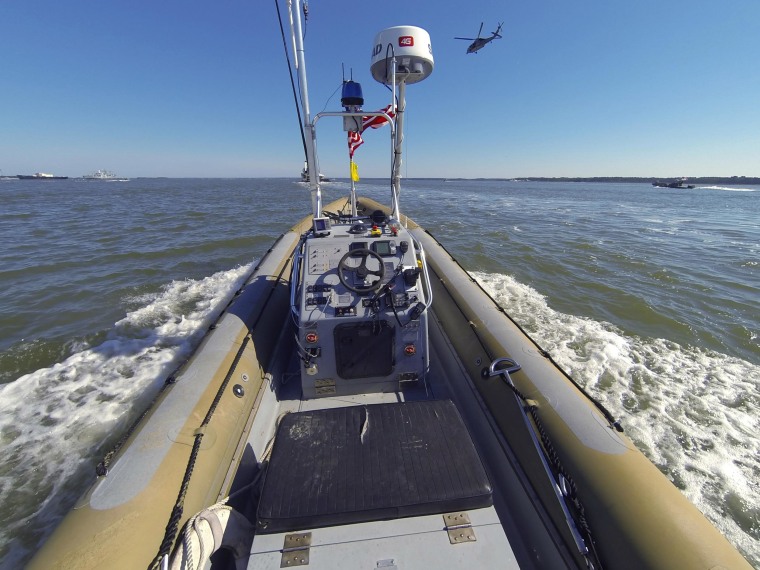Navy ships are at their most vulnerable when they’re resupplying in port or navigating narrow straits or rivers because they’re tricky to maneuver in tight quarters and vulnerable to attack. The attack 14 years ago on the USS Cole as it refueled while berthed in Yemen killed 17 American sailors and reiterated the need to protect warships in port.
To counter asymmetric attacks—the 505-foot Cole was attacked by a small craft packed with explosives that ripped a 40-foot gash in the destroyer—the Navy uses small patrol craft for close-quarters defense. And that means placing sailors in the line of fire. That got the Office of Naval Research into developing autonomous technology for small “swarmboats” that could be used for risky jobs.
These vessels would, much like the autonomous minesweepers the Army is testing, act as a force multiplier, allowing one sailor to do the work of several, from a safe location.
The technology, called Control Architecture for Robotic Agent Command and Sensing (CARACaS), is essentially an autopilot on steroids that can be installed on nearly any boat. During a test in August on the James River in Newport News, Virginia, Navy researchers used 13 rigid-hulled inflatable boats equipped with the technology to escort a “high-value” ship and swarm an “enemy” vessel. The boats decide on their own where to go, when to steer, and when to apply the throttle. A human operator—who can be in another ship, a helicopter, or well away from the action—uses a laptop to tell the swarmboats which craft are to be protected and which are to be attacked. Think of it as an officer giving his (robotic) sailors a mission—protect this guy, attack that one—and letting them determine how best to fulfill it.
The Navy wouldn’t say much about how the technology works, but it appears similar to what is used in other autonomous vehicles, including passenger cars. Hardware turns the wheel, adjusts the throttle, and so forth, while computers and radar detect other boats and decide where to go and what to do.
The ships in August’s test didn’t open fire, but the Navy is getting there, though it says robots will not decide when or whom to attack. “If there is any kind of designation, any kind of targeting,” says Rear Adm. Matthew Klunder, Chief of Naval Research, “there is always a human in the loop.” If a boat loses communication with its human captain, who may be halfway around the world, it goes dead in the water.
The autonomous technology could be applied to any number of boats for a wide variety of situations. A swarmboat could deploy SEALs on a beach, then return to sea and await further instructions, avoiding the need to leave a sailor with the ship or risk having it discovered. The tech also could control larger ships that don’t necessarily need on-board oversight, like resupply or patrol vessels.
The Navy didn’t reveal the costs of the CARACaS system, nor when it might be deployed. The Pentagon certainly is excited by its possibilities, however. “While the attack on Cole was not the only motivation for developing autonomous swarm capability, it certainly is front and center in our minds and hearts.” says Klunder. “If Cole had been supported by autonomous USVs, they could have stopped that attack long before it got close to our brave men and women on board.”
--- Jordan Golson, Wired
